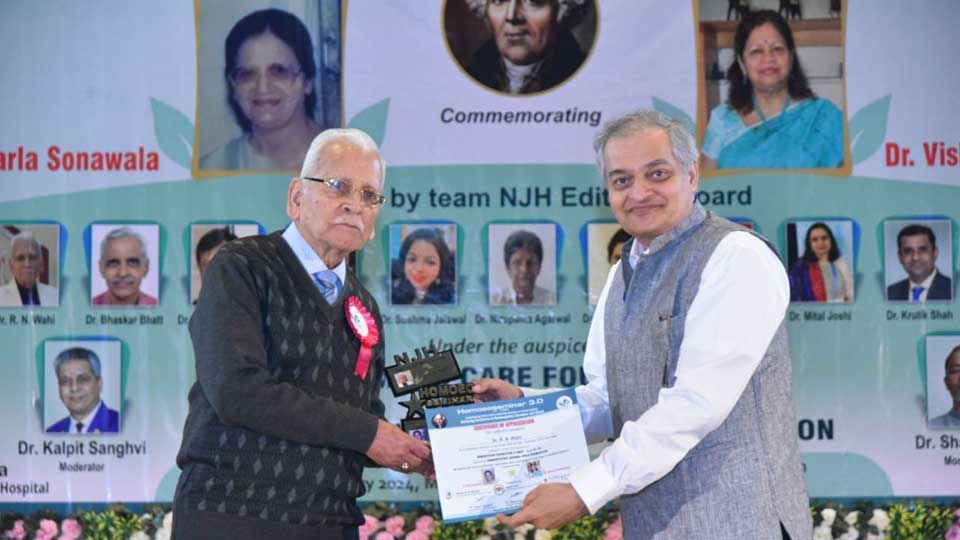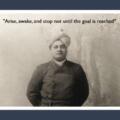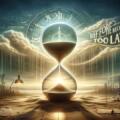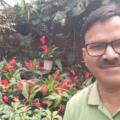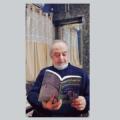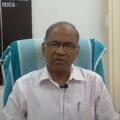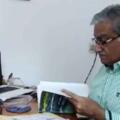In an era where the integrity of medical literature is more important than ever, the role of a discerning and knowledgeable reviewer cannot be understated. Especially in the field of Homoeopathy, where tradition intertwines with modern practice, the insights of an experienced practitioner are invaluable.
It is in this context that we introduce a comprehensive review of “Boger’s Legacy”, a book that has already garnered attention in the Homoeopathic community for its depth and originality. This review holds particular significance as it comes from Dr. R. N. Wahi, a figure whose lifetime of dedication to Homoeopathy and community welfare has made him a respected voice in the field.
Dr. Wahi’s review is not just an assessment of a literary work; it reflects his extensive experience and understanding of the nuances of Homoeopathic practice. His career, marked by notable achievements and contributions, offers a profound perspective on the value and impact of Dr. Singhal’s work.
As we delve into his review, it is essential to acknowledge the depth of knowledge and experience that Dr. Wahi brings to his evaluation.
About the reviewer:

Dr. R. N. Wahi stands as a towering figure in the Homoeopathic community, with a career that spans over several decades, marked by significant contributions to both the medical field and societal welfare. Born in 1941 in the Chandni Chowk area of Old Delhi, Dr. Wahi’s educational journey led him from a reputed local school to graduating from Deshbandhu College, Delhi University, in 1962. His passion for Homoeopathy was actualized when he obtained his D.H.S. from the Delhi Board of Homoeopathic System of Medicine in 1967, followed by a Post Graduate degree in Rehabilitation Medicine from the All India Institute of Physical Medicine & Rehabilitation, Bombay, in 1980.
Professionally, Dr. Wahi’s impact has been profound and multifaceted. Early in his career, he joined the Delhi Homoeopathic Medical Association (DHMA), ascending to various leadership roles, including the presidency. His significant contributions include instrumental involvement in the formulation of the Drugs & Cosmetics Rules for Homoeopathic medicines and active participation in the formation of the Homoeopathic Central Council in 1975. Dr. Wahi also served as a Joint Editor of the HAHNEMANNIAN HOMOEOPATHIC SANDESH, furthering his commitment to the dissemination of Homoeopathic knowledge.
Dr. Wahi’s influence extends beyond professional boundaries into community engagement and social welfare. His initiatives in Krishan Nagar and DLF, Gurgaon, showcase his dedication to community development, addressing critical issues like transportation and infrastructure improvement. As President of the DLF QE Residents’ Welfare Association, he was instrumental in initiating significant projects, including rainwater harvesting and the establishment of community centres. His efforts in fostering fellowship and community spirit through various cultural and sports events have enriched the lives of many.
In summary, Dr. R. N. Wahi’s career is marked by a steadfast dedication to Homoeopathy, exemplary leadership in professional associations, and a deep commitment to community welfare. His journey from a student passionate about Homoeopathy to a respected leader and mentor in the field exemplifies a lifetime of service and continuous learning. His work not only advances the practice of Homoeopathy but also leaves an indelible mark on community development and social responsibility.
The Review:
These days when there is abundant material “COPY-PASTE,” courtesy the Google Baba, the original works are becoming the casualty, and gradually there is becoming dearth of the source material. If this trend is not halted, the future generations would not understand the basic principles, and their practice in Homoeopathy. In such an environment, the book titled,” BOGER’S LEGACY & AUGMENTING THE SYNOPTIC KEY’S REPERTORY” By Dr. Anil Singhal, is a welcome addition to the Homoeopathic Literature. He joins the league of Dr. Santharam, Dr. Sreekumar R, Dr. Ajit Kulkarni, Dr. Issac Golden, Dr. E.S. Rajendran et al
Even in the General Medicine, Surgery, Pathology, Medical Jurisprudence etc., etc., we find that various original works have been/are being augmented periodically. I, personally feel that our two prestigious institutions, namely, National Commission for Homoeopathy, and the Central Council for Research in Homoeopathy, can play a leading role in carrying forward the legacy of many of our stalwarts, and develop these works as encyclopedias.
Dr. Samuel Hahnemann’s mission was to make Homoeopathy as pure & perfect as possible. Boenninghausen’s approach has been to take the direction towards mathematical correctness. It was Dr. C. M. Boger who carried his works to the next level, while giving due respects to the critics of Boenninghausen, in various articles, whether in The Homoeopathic Recorder, and in other articles. In fact, BBCR is the outcome of these efforts.
To understand the work of any author, one must go through the Preface/Foreword of any book, as without understanding the soul of the author, one can’t do justice to his/her efforts. When one goes through the acknowledgements by Dr. Anil Singhal, he/she can have a feeling of his study/hunger to learn Boger, apply it in his own clinical practice and share his works with us in the larger interest of Homoeopathy.
The first 33 pages of the book reflect the extensive research the author has done to understand Dr. C. M. Boger, wherein he has acknowledged the assistance he got from various sources under the inspiration of his guide, Dr. M. P. Arya. In his research he has received good support from various Doctors, of National as well as international fame. These include Dr. Jugal Kishore, Dr. D. P. Rastogi, Dr. Girendra Pal, Dr. J. D. Daryani, Dr. K. S. Srinivasan, Dr. Klaus Scheiman-Burkhardt, Dr. Norbert Winter, Dr. Hans Weitbrecht, Dr. Roger van Zandvoort, Dr. David Little, etc. He has not ignored the support received the support received from his own generation colleagues which include Dr. Bimal Gosain, Dr. Pankaj Aggarwal, Dr. Gyan & Parul Wadhwani, Dr. Sapna Gupta, Drs. Navneet & Sandhya Rastogi, and others. Dr. Singhal’s research has been very rightly acknowledged by his guide Dr. M. P. Arya, where in the foreword he writes “The book arrives at a pivotal moment, as India embraces the ‘Competency-based Dynamic Curriculum’ in Homoeopathic Education”.
The Chapter from Pages 35 to 54 revolves around “Dr. Boger’s Journey – The making of a legend’, which concludes with the lines of Dr. H. A. Robert “Dr. Boger’s Work on Homoeopathy has been masterful, and the things that he has published have been of great value”
Dr. C. M. Boger’s legacy has its foundations from the works of Boenninghausen, wherein he has several key differences to better address the patient’s whole life history, and incorporate the evolving knowledge of cellular pathology. In fact, this approach has been duly acknowledged by Dr. L. D. Dhawale & his son Dr. M. L. Dhawale, and is being followed in their institute at Palghar managed by MLD Trust. These days when our system is facing the challenges to convince the scientific relevance of Homoeopathy, it is perhaps this approach, which balances the Science & Art of Homoeopathy.
The Synoptic key by C. M. Boger forms the Apex of his Works, as acknowledged by Dr. Anil Singhal, wherein he has done extensive research on this Editions from 1st to the 6th Edition, and from pages 159 to 184, he has proposed additions to Augment the Synoptic Key’s Repertory.
In conclusion, I would like to share Dr. M. P. Arya’s words, “Allow this book to guide you, inspire you, and nurture your passion for healing.”, and Dr. Anil Singhal’s passion, in the words, “The next chapter: Your role in Advancing Boger’s Legacy. …… The next Chapter is for you to write”
DR. R. N. WAHI
Chairman Organizing Committee, South Delhi Homoeopathic Association
In concluding this insightful review by Dr. R. N. Wahi, it is imperative to express our heartfelt gratitude for his invaluable contributions. His detailed analysis of “Boger’s Legacy” is not just a testament to the book’s significance in the Homoeopathic community, but also a reflection of Dr. Wahi’s deep understanding and lifelong commitment to the field of Homoeopathy. His words carry the weight of experience and wisdom, offering readers a nuanced perspective that only a practitioner of his calibre can provide.
We extend our sincerest thanks to Dr. Wahi for his meticulous and thoughtful review.
Dr. Wahi’s review reminds us that the journey of learning and practicing Homoeopathy is an ongoing one, filled with continuous discovery and growth. It encourages us to uphold the high standards set by our predecessors and to contribute to the ever-evolving tapestry of Homoeopathic knowledge.
In essence, this review not only enriches our understanding of “Boger’s Legacy” but also fortifies our appreciation for the rich heritage and progressive future of Homoeopathy.
